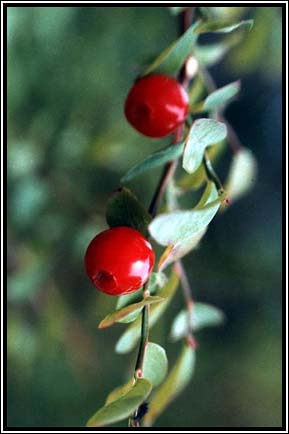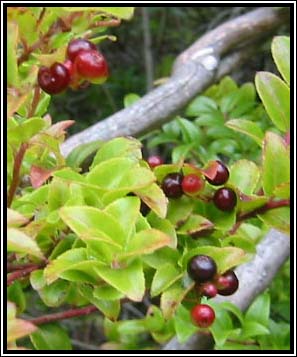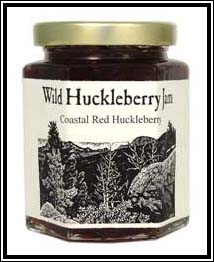 |
|
ECOLOGY
|
 |
HISTORY The Yakima Indians have a huckleberry legend that shows the importance of the huckleberry in their culture. The legend is a creation story, in which a creator makes the world out of his body parts. The story ends when the creator realizes there are no berries in the mountains and the only body parts he had left were his eyes.
|
|
The Native Americans of the Northwest have had a relationship with the huckleberries for thousands of years. Throughout Native American history, they have been going to huckleberry patches every year, and still continue to do so. After the huckleberries are harvested, they are then dried. The traditional process of drying the huckleberries first starts with either felling a large fir tree or finding one already down, digging a trench along the base of the tree and building up a sloping mound along the trench, opposite the tree. Tule mats are placed on the banks and the berries are placed on the mats. Small fires are set along the tree, using it as fuel. The berries then dry on the mats. Once dried, the berries are lighter and can be more easily transported. Also when dried, the berries can keep through the winter (Lookabill, 1998).
|
 |
ECONOMICS Since the domestication of huckleberries has not been successful, harvesting still takes place in the wild. Harvesters pick them directly with their fingertips, though lawn rakes are sometimes used to sweep the berries off the bush (Kawatski, 1992). The capital investments in harvesting huckleberries are minimal. All that are needed are transportation to the patch, something to carry the berries (like a bucket), and possibly a permit, depending on district regulations. Once berries are picked, the harvester can choose to sell them to a buyer or directly to a consumer. MANAGEMENT AND POLICY Regulations on picking huckleberries are fairly relaxed compared to other forest products. Neither the West Fir Ranger District nor the McKenzie Ranger District of the Willamette National forest require permits. The Gifford Pinchot National Forest in Washington requires a permit if more than three gallons is harvested. They also specify that mechanical harvesting of huckleberries is prohibited. This includes the use of rakes (Gifford Pinchot National Forest, 2005). The Flathead National Forest is Montana does not require a permit to pick berries, but no more than ten gallons per adult can be taken. The 1932 Handshake Agreement
|
|

|
The greatest threat to the Sawtooth Berry Fields is no longer non-natives sneaking in to steal berries; it is the ever-encroaching forest that is taking over the huckleberry patches (Fisher 2002). Fire has not occurred in the area for nearly a century, and the conifers are taking over the patches (Boyd 1999). Fire has not occurred because the United States Forest Service does not permit burning. *Compiled from a paper by Michael Klinkebiel |